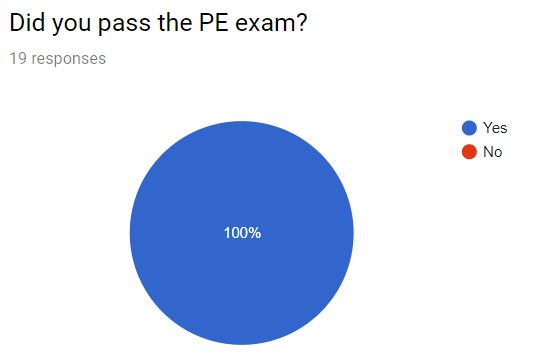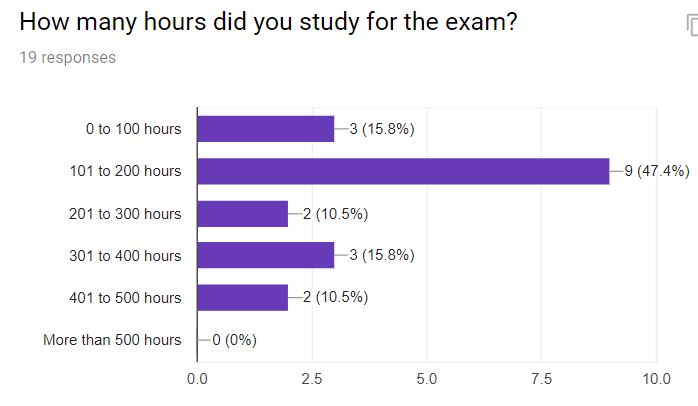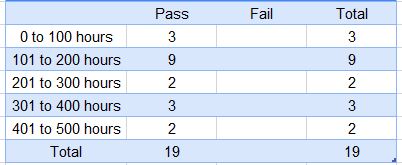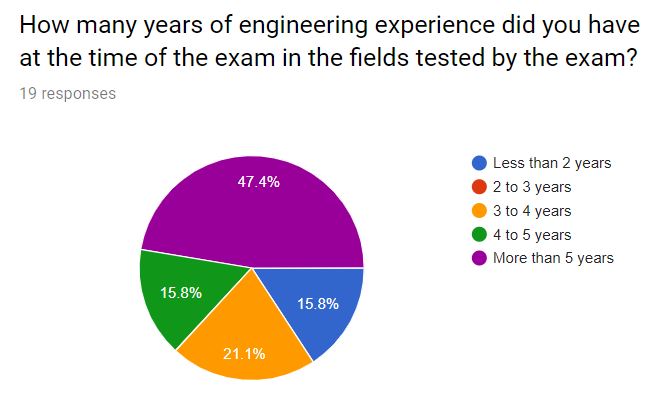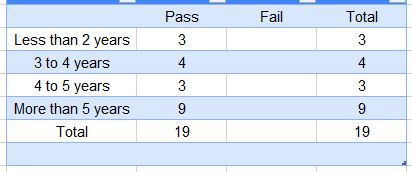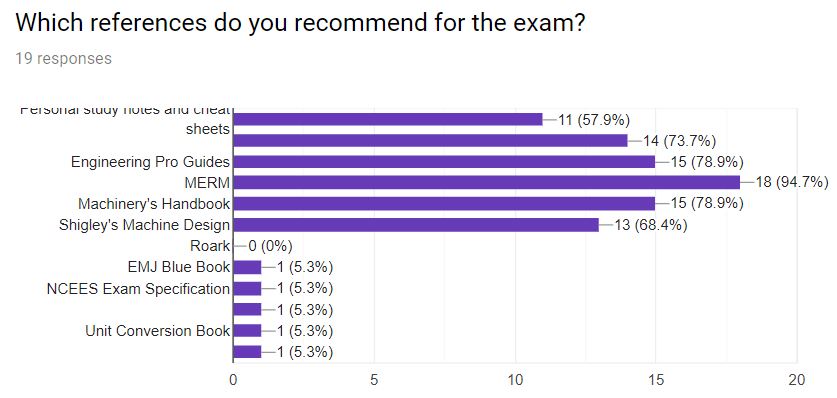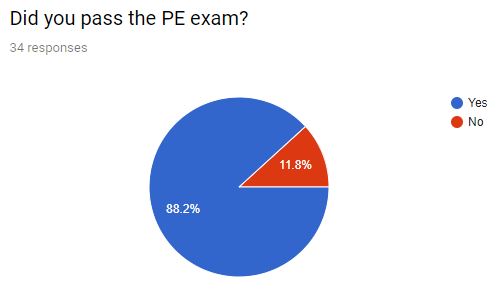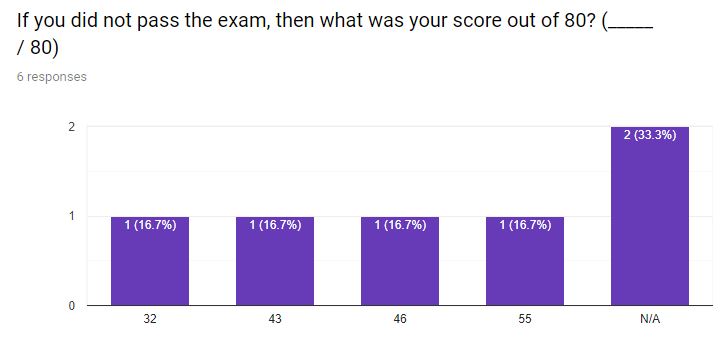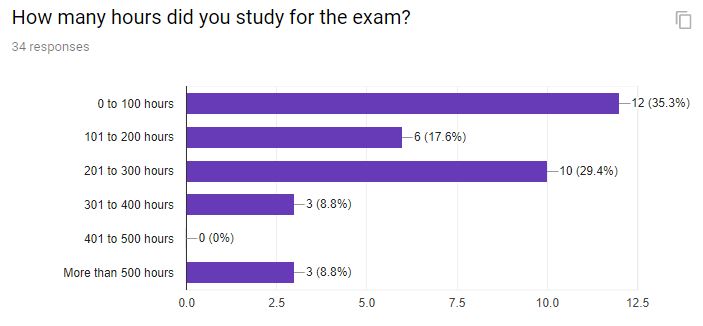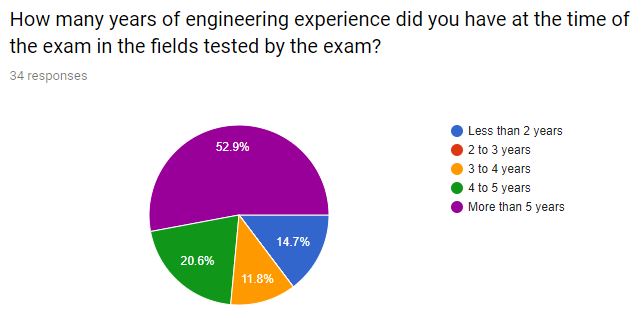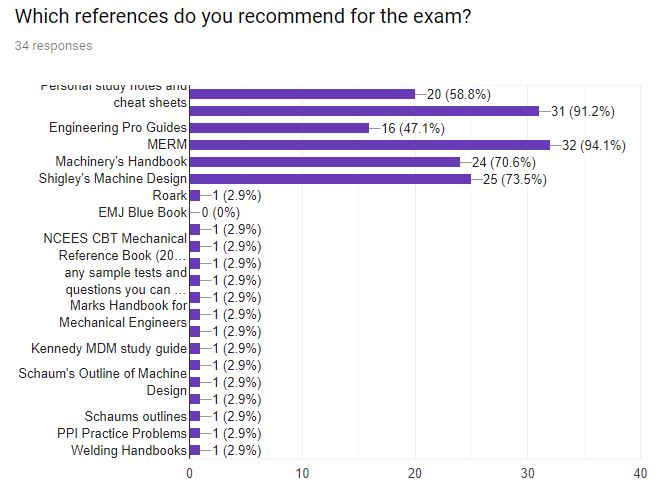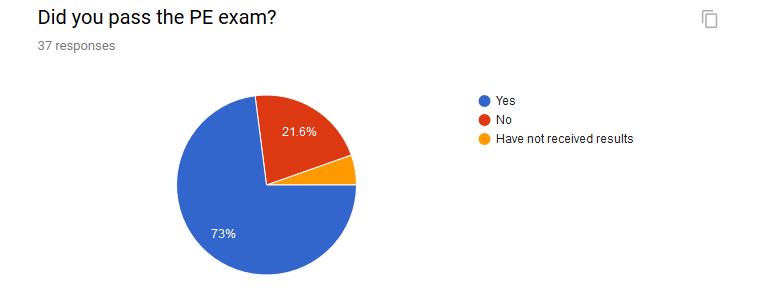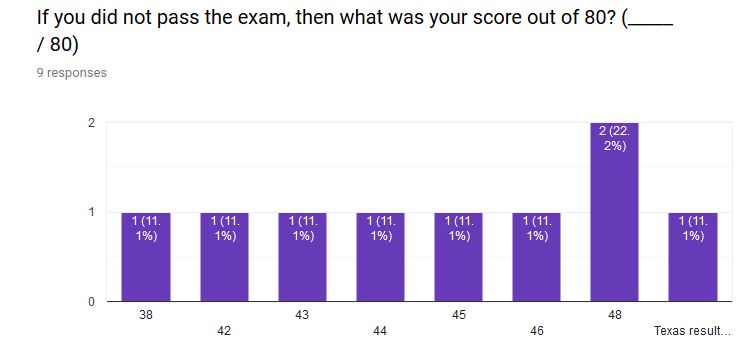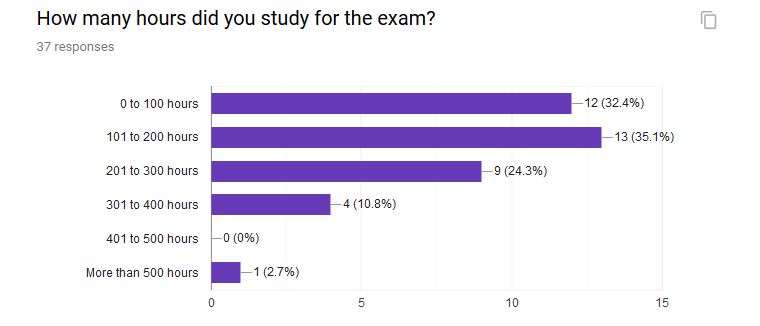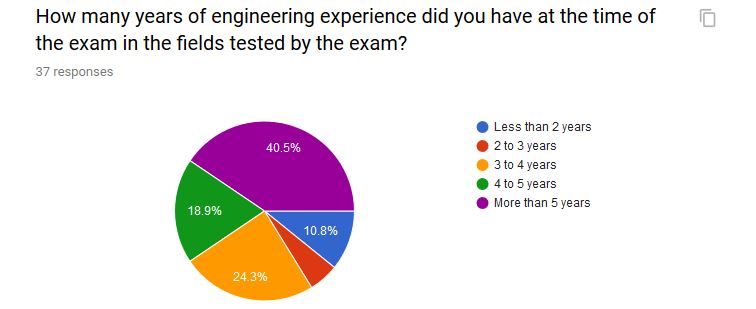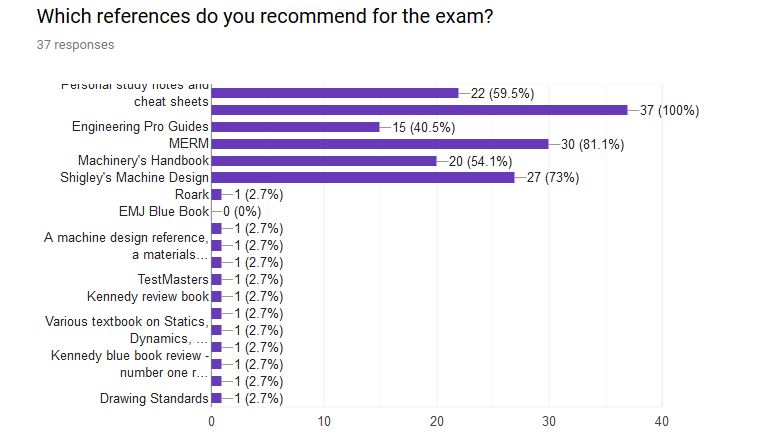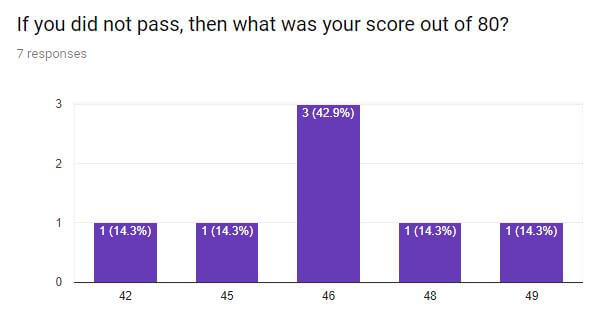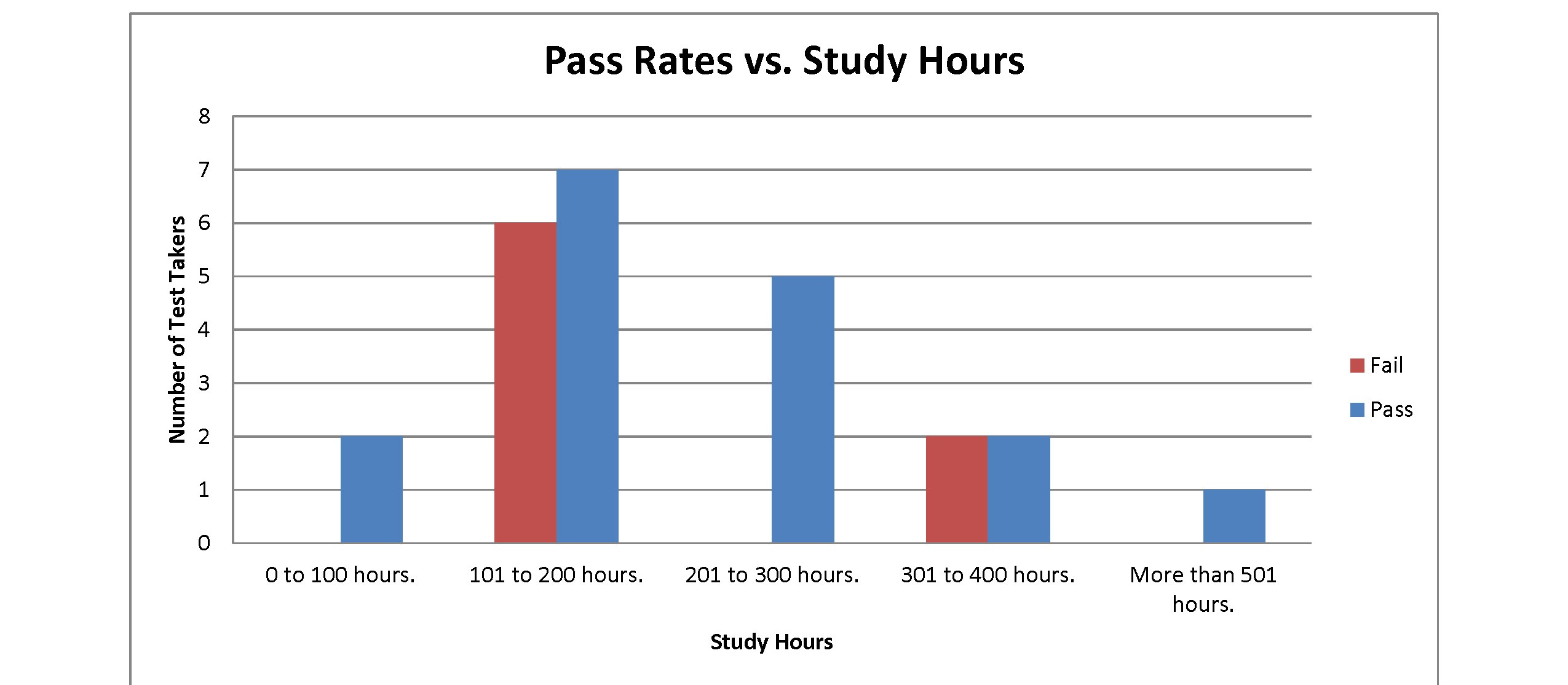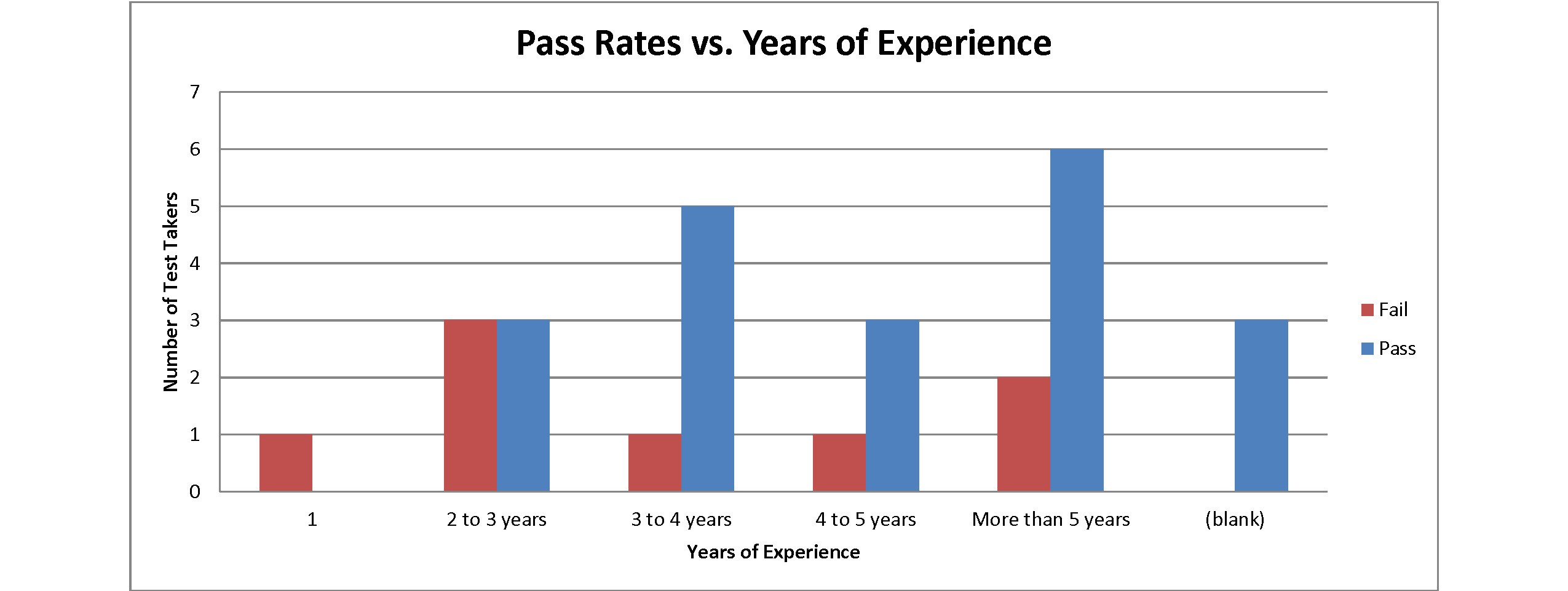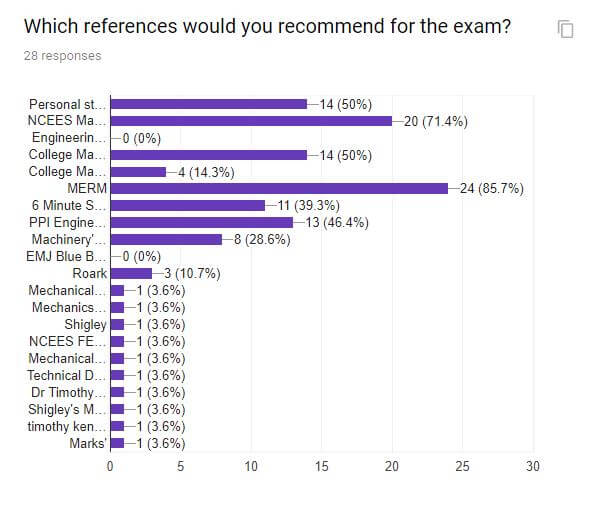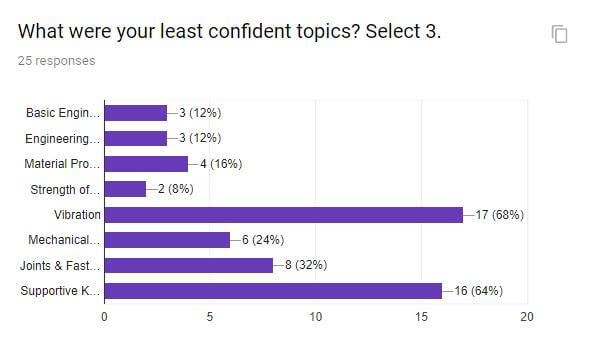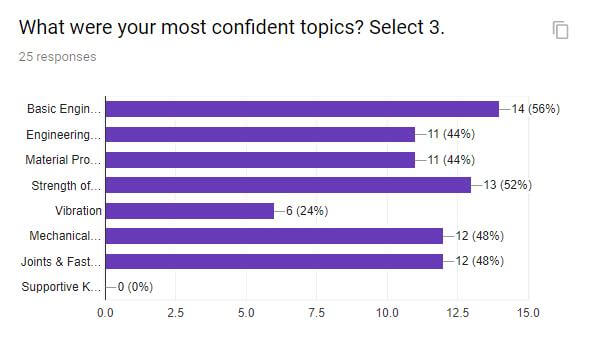
Engineering Pro Guides is your guide to passing the Mechanical & Electrical PE and FE Exams
Engineering Pro Guides provides mechanical and electrical PE and FE exam technical study guides, practice exams and much more. Contact Justin for more information.
Email: contact@engproguides.com
EXAM TOOLS
PE Results Survey
for the Machine Design & Materials P.E. Exam
Introduction
After every PE exam, I conduct an online survey with as many PE exam test takers that I can find. I primarily use my website, Engineering Pro Guides and Engineer Boards to find test takers to take the survey. The survey provides insight into an estimated passing score, how well test takers do based on experience and number of hours studied, which areas of the exam are difficult or easy. The raw results of the survey are shown on the links below. There is also additional discussion below on this page and in the technical study guide.
Recommendation 1: More Practice Problems with Deliberate Practice
The most common recommendation is to just do more practice problems. But there are caveats that go with this recommendation. First, make sure the practice problems fit within the NCEES Machine Design & Materials topics and are not overly complex or simple. The problems should take roughly 6 minutes to do. The second caveat is that you must complete the problems with deliberate practice. This means that when you go through the problem, don't just look at the solution. You should understand why the answer is the way it is and you should also extrapolate from that one problem into all the other types of problems that could arise. For example, if the problem gives you force and asks you to find stress in a beam, then you should be able to conduct a problem given stress and then calculate force. You should also extrapolate the problem into different scenarios, like what if the beam geometry changed.
October 2019 Survey Summary
This summary is taken from the raw data compiled from the October 2019 Surveys.
Number of Test Takers (692) vs Number of Survey Results (19)
The survey is only as good as the number of test takers that take the survey. According to the NCEES website, there were 548 compared to 490 first time takers in April 2019 and 144 compared to 142 repeat takers in April 2019, with a total of 692 compared to 632 Machine Design & Materials PE Exam test takers on April 2019. The survey had 19 responses or 2.7% of the total test takers. As you go through the results of the survey, please remember that only a small percentage of the test takers took the survey so you should be careful when assigning authority to the results of the survey.
Survey Pass Rates (100%) vs NCEES Pass Rates (67%)
The NCEES pass rates are 68% for the 548 first time test takers and 40% for the other 144 test takers. This results in an overall pass rate of 62%. The survey test takers have a pass rate of 100%.
Estimated Cut Score: 56/80
The estimated cut score is typically based on the highest fail score received in the survey. However, no respondent failed the exam. So the old estimated cut score will be used from April 2019.
Ideal Number of Study Hours: Around 200 hours
The majority of the test takers that passed the exam study around 100 to 200 hours at a pass rate of 100%. Rarely do people study more than 300 hours or less than 100 hours. You should plan for a minimum of 100 hours and an average of 200 hours. On average the 200 hours results in 10 to 20 hours per week of studying.
Ideal Years of Experience: More than 5 years
The majority of the test takers have more than 5 years of experience. This probably just means that more states require 4 or more years of experience.
Recommended References
This is the list of the recommended references in order of percentage of people that recommended the reference.
- NCEES Sample Exam
- MERM
- Shigley's Machine Design
- Personal Study Notes and Cheat Sheets
- Machinery's Handbook
- Engineering Pro Guides Products (Technical Study Guide, Full Exam and/or References Exam
Weak Areas
The weak areas in this exam were as shown below in no particular order. In the past surveys, the weak areas have always included Basic Engineering Practice and Vibration. Recently, people have also been struggling with Material Properties.
- Rivets
- Manufacturing Processes
- PMP
- SI Units
- Vibrations
- Failure Theory
- FEA
- Economics
- Materials Science
April 2019 Survey Summary
This summary is taken from the raw data compiled from the April 2019 Surveys.
Number of Test Takers (632) vs Number of Survey Results (34)
The survey is only as good as the number of test takers that take the survey. According to the NCEES website, there were 490 compared to 559 first time takers in October 2018 and 142 compared to 123 repeat takers in October 2018, with a total of 632 compared to 682 Machine Design & Materials PE Exam test takers on October 2018. The survey had 34 responses or 5.4% of the total test takers. As you go through the results of the survey, please remember that only a small percentage of the test takers took the survey so you should be careful when assigning authority to the results of the survey.
Survey Pass Rates (88%) vs NCEES Pass Rates (67%)
The NCEES pass rates are 75% for the 490 first time test takers and 39% for the other 142 test takers. This results in an overall pass rate of 67%. The survey test takers have a pass rate of 88%.
Estimated Cut Score: 56/80
The estimated cut score is based on the highest fail score received in the survey. The highest fail score recorded was 55.
Ideal Number of Study Hours: Around 200 hours
The majority of the test takers that passed the exam study around 100 to 300 hours at a pass rate of 100%. Rarely do people study more than 300 hours. The people who studied less than 100 hours had a pass rate of 75%. On average the 200 hours results in 10 to 20 hours per week of studying.
Ideal Years of Experience: More than 5 years
The majority of the test takers have more than 5 years of experience. When you compare the pass rates based on years of experience, those with less than 2 years of experience had the lowest pass rate at 80%. Those with more than 3 years of experience have the highest pass rates. This seems to indicate that the PE exam is geared more towards engineers with more practical experience, rather than to engineers right out of college/university.
Recommended References
This is the list of the recommended references in order of percentage of people that recommended the reference.
- NCEES Sample Exam
- MERM
- Shigley's Machine Design
- Personal Study Notes and Cheat Sheets
- Machinery's Handbook
- Engineering Pro Guides Products (Technical Study Guide, Full Exam and/or References Exam
Weak Areas
The weak areas in this exam were as shown below in no particular order. In the past surveys, the weak areas have always included Basic Engineering Practice and Vibration. Recently, people have also been struggling with Material Properties.
- Manufacturing Processes
- PMP
- SI Units
- Vibrations
- Failure Theory
- FEA
- Economics
- Materials Science
October 2018 Survey Summary
This summary is taken from the raw data compiled from the October 2018 Surveys.
Number of Test Takers (682) vs Number of Survey Results (37)
The survey is only as good as the number of test takers that take the survey. According to the NCEES website, there were 559 compared to 553 first time takers in October 2017 and 123 compared to 134 repeat takers in October 2017, with a total of 682 compared to 687 Machine Design & Materials PE Exam test takers on October 2017. The survey had 37 responses or 5.4% of the total test takers. As you go through the results of the survey, please remember that only a small percentage of the test takers took the survey so you should be careful when assigning authority to the results of the survey.
Survey Pass Rates (73%) vs NCEES Pass Rates(66%)
The NCEES pass rates are 72% for the 559 first time test takers and 39% for the other 123 test takers. This results in an overall pass rate of 66%. The survey test takers have a pass rate of 73%.
Estimated Cut Score: 49/80
The estimated cut score is based on the highest fail score received in the survey. The highest fail score recorded was 48.
Ideal Number of Study Hours: Around 200 hours
The majority of the test takers that passed the exam study around 100 to 200 hours at a pass rate of 91%. The majority of people study between 100 and 300 hours. Rarely do people study more than 300 hours. The people who studied less than 100 hours has a pass rate of 60%. On average the 200 hours results in 10 to 20 hours per week of studying.
Ideal Years of Experience: More than 5 years
The majority of the test takers have more than 5 years of experience. When you compare the pass rates based on years of experience, those with less than 3 years of experience had the lowest pass rate at 67%. Those with more than 3 years of experience have the highest pass rates with a pass rate of 82%. This seems to indicate that the PE exam is geared more towards engineers with more practical experience, rather than to engineers right out of college/university.
Recommended References
This is the list of the recommended references in order of percentage of people that recommended the reference.
- NCEES Sample Exam
- MERM
- Shigley's Machine Design
- Personal Study Notes and Cheat Sheets
- Machinery's Handbook
- Engineering Pro Guides Products (Technical Study Guide, Full Exam and/or References Exam
Weak Areas
The weak areas in this exam were as shown below in order of difficulty. In the past surveys, the weak areas have always included Basic Engineering Practice and Vibration. Recently, people have also been struggling with Material Properties.
- Basic Engineering Practice
- Vibrations
- Material Properties
October 2017 Survey Summary
This summary is taken from the raw data compiled from the October 2017 Surveys.
Number of Test Takers (687) vs Number of Survey Results (28)
The survey is only as good as the number of test takers that take the survey. According to the NCEES website, there were 553 first time takers and 134 repeat takers, with a total of 687 Machine Design & Materials PE Exam test takers on October 2017. The survey had 28 responses or 4.1% of the total test takers. As you go through the results of the survey, please remember that only a small percentage of the test takers took the survey so you should be careful when assigning authority to the results of the survey.
Survey Pass Rates (71%) vs NCEES Pass Rates(69%)
The pass rates on the survey indicate that 71.4% people surveyed passed the exam and 28.6% failed the exam. The NCEES website indicates that 75% of first time test takers passed the exam and 45% of repeat test takers passed the exam. The overall NCEES reported pass rate was 69.1%.
Estimated Cut Score: 50/80
The estimated cut score is determined by the highest fail score reported on the survey or on the Engineer Boards forum. The highest fail score was 49. This means that the possible passing score was 50. However, based on previous experience, the highest fail score reported was 56.
Ideal Number of Study Hours: Around 200-300 hours
The following graph shows the relationship between passing/failing and the number of study hours. Based on this graph, the number of failing test takers goes down as you study more, which seems obvious. However, there seems to be a sweet spot at the 201 to 300 hours of studying. At this level, there is the biggest separation between passing and failing test takers. The number of passing test takers peaks at the 201 to 300 level goes down after this point.
Ideal Years of Experience: More than 3 years
The following graph shows the relationship between passing/failing and the number of years of experience. The number of failing test takers seems be independent of the number of years of experience. The difference between the number of passing and failing test takers seems to be independent of the number of years of experience. There is just not enough data to draw any conclusions based on years of experience.
Recommended References
More insight into the recommended references can be found on the link below. This link shows all the recommended references and which topics and subtopics they apply.
- MERM
- NCEES Sample Exam
- Personal Study Notes & Cheat Sheets
- College Machine Design Book
Weak Areas
On the survey, each person was asked to choose three of their least confident topics. This question provides insight into which of the topics proves to be the most difficult for people. On the survey, test takers struggled with Vibration and Support Knowledge. The best insight to take from this information is that if you struggle in these areas, then you should not be too worried, because others struggled and still passed. However, if you want to set yourself apart from the other test takers then you should study these areas more diligently. Especially since these topics have a high amount of problems on the exam.
- Vibration
- Support Knowledge
Strong Areas
On the survey, each person was asked to choose three of their most confident topics. This question provides insight into which of the topics proves to be the easiest for people. On the survey, test takers did well in all topics except for Vibration and Supportive Knowledge. The best insight to take from this information is that if you struggle in any of the areas besides Vibration and Supportive Knowledge, then you SHOULD be worried, because people who passed did really well in these areas. You should study these areas more diligently. Especially since these topics have a high amount of problems on the exam.
